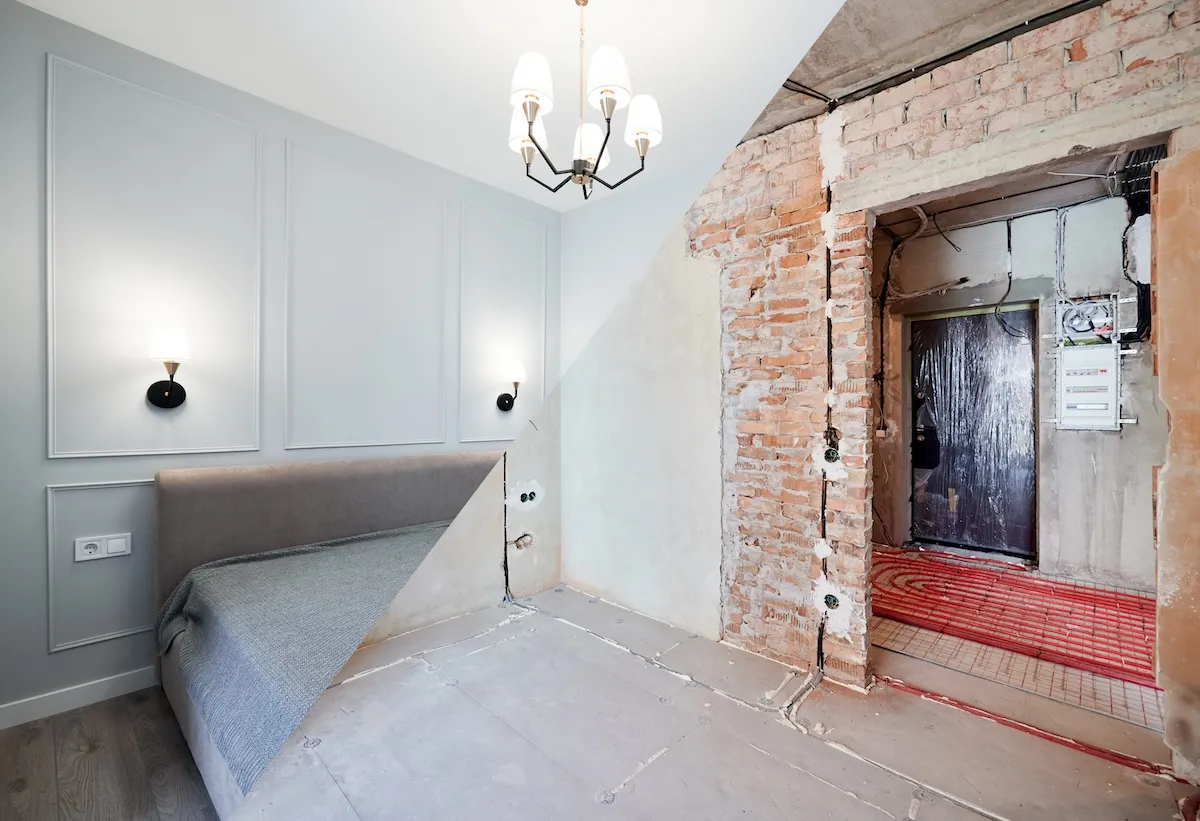Whether you're renovating a bathroom, replacing your roof, or adding a whole new room, one thing's for sure: home projects get messy fast. Not just physically, but logistically, financially, and emotionally. The good news? With the right prep and systems in place, even the biggest project can become manageable. Here’s your step-by-step guide to planning major home improvements without losing your cool (or your budget).
1. Start With a Clear Goal
It’s easy to get swept up in aesthetics, inspiration, and interest boards but before you start comparing tile samples, ask yourself:
- What’s the real purpose of this project? (Function? Resale? Comfort?)
- What problem is it solving?
- What’s the must-have vs. the nice-to-have?
Define success upfront so you (and your contractor) know what matters most.
2. Set a Realistic Budget — Then Add 15%
No matter how well you plan, surprises will likely happen. Labor costs, material delays, and that one thing hiding behind the wall, it adds up.
Break your budget into categories:
- Materials
- Labor
- Tool Rentals or Purchases (for DIYers)
- Waste Disposal/Cleanup (dumpster rental, hauling)
- Permits/fees
- Contingency (~15%)
Pro tip: Use a platform like HouseFacts to log project costs, upload estimates and receipts, and track invoices in one place.
3. Get the Right Permits
Permits may feel like a hassle, but skipping them can cause major headaches, from fines to failed inspections to resale delays. Check with your city or town's building department and confirm:
- What kind of work requires a permit
- How to apply (online, in-person, via contractor)
- Who’s responsible: you or your contractor?
Document everything. It’s often needed later for insurance or resale disclosures.
4. Vet Your Contractors Like You’re Hiring for a Job (Because You Are)
Always get at least 3 quotes. Don’t just compare pricing. Compare the scope of work, materials, timelines, and communication style.
Ask:
- Are you licensed and insured?
- Can you provide written contracts and itemized estimates?
- Can you share references?
- What’s your change order process?
Pro tip: Document every stage of the project with photos; it helps resolve disputes, supports insurance claims, and gives you a clear before-and-after record.
5. Create a Project Timeline (That Includes Life Stuff)
Renovations aren’t just about materials and labor—they’re about timing, too. And life doesn’t pause just because your kitchen is under construction.
When building your project timeline, consider how it fits into the rest of your life:
- Travel and holidays: Avoid scheduling major work during times you’ll be out of town or hosting. You don’t want drywall dust with your Thanksgiving dinner.
- School schedules and routines: If you’ve got kids, think about how construction noise, dust, or limited access to bathrooms or kitchens might impact the day-to-day.
- Weather seasons: Certain projects (like roof work or exterior painting) are best timed around your region’s weather patterns. Avoid peak storm or extreme heat seasons.
And here’s the big one: build in buffer time. Permit approvals can take longer than expected, materials can get delayed, and contractors sometimes run behind. Giving yourself a cushion reduces stress and helps avoid a domino effect of delays.
You’ll thank yourself for planning ahead, and your project will run much smoother because of it.
6. Protect What’s Not Being Worked On
Before the first wall comes down, take steps to safeguard the rest of your home:
- Cover furniture, seal off vents, and close doors to contain dust
- Remove wall hangings, breakables, and anything sentimental
- Store valuables in a secure location
- Confirm insurance coverage and contractor liability during the project
- Take before photos for insurance, and to track improvements
- Label and safely store materials you plan to reuse (like cabinet hardware or light fixtures)
- Communicate clearly with your contractor about areas that are strictly off-limits
Protecting your space now saves time, money, and regrets later.
7. Keep a Complete Record from Start to Finish
Track every step of your project in one place:
- Save estimates, permits, invoices, and receipts
- Log key decisions and contractor communication
- Upload manuals, warranties, and final photos
- If it’s a capital improvement, update your home’s cost basis
Keeping everything organized digitally means less scrambling later — and a full record ready for resale, insurance, or tax time.
Final Thought
Big home projects don’t have to mean big stress. With thoughtful planning, good documentation, and a clear system, you can keep your project and your sanity on track.
Want to stay organized every step of the way?
HouseFacts makes it easy to track your upgrades, store important documents, and keep your entire home project organized, all in one secure, accessible place.




